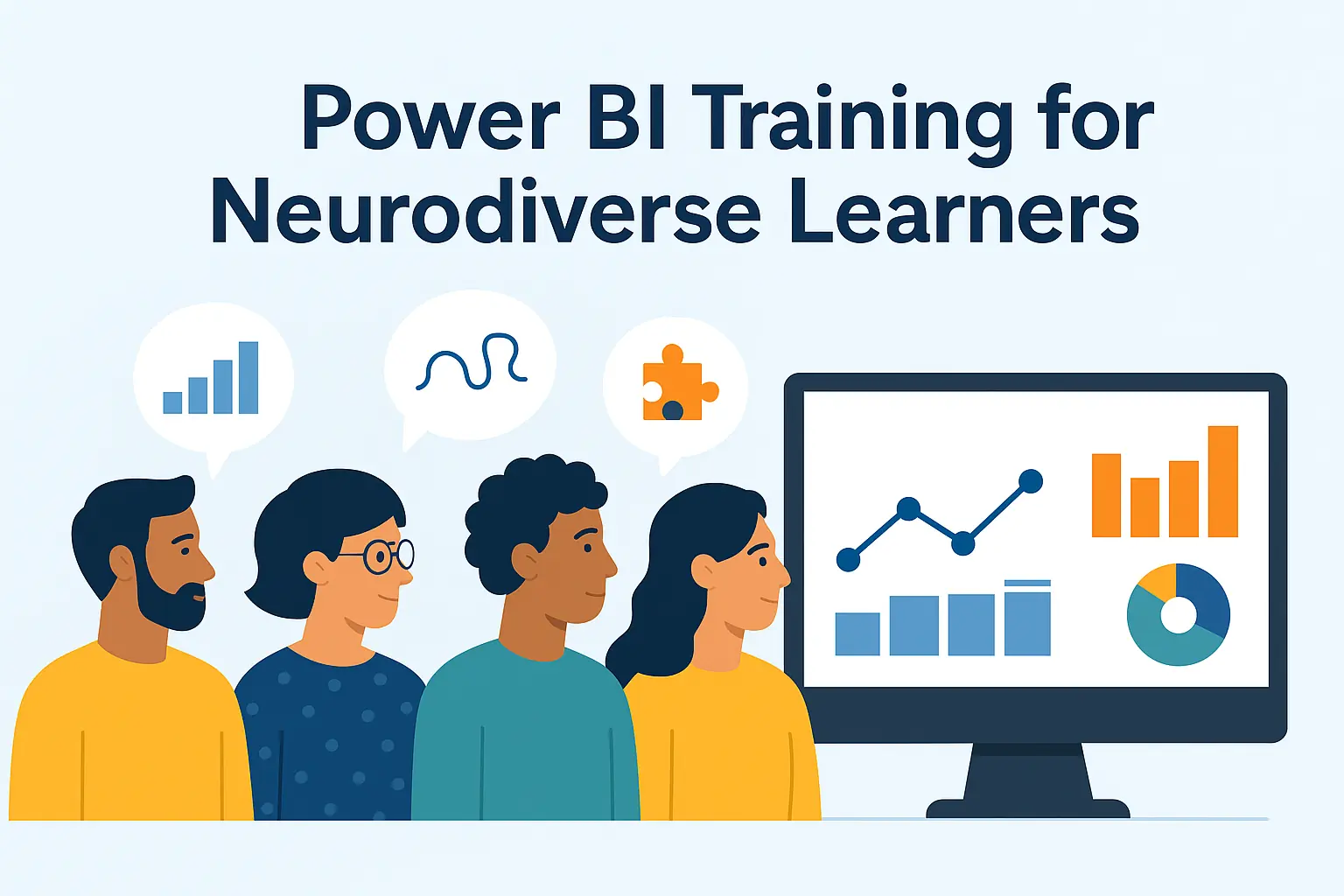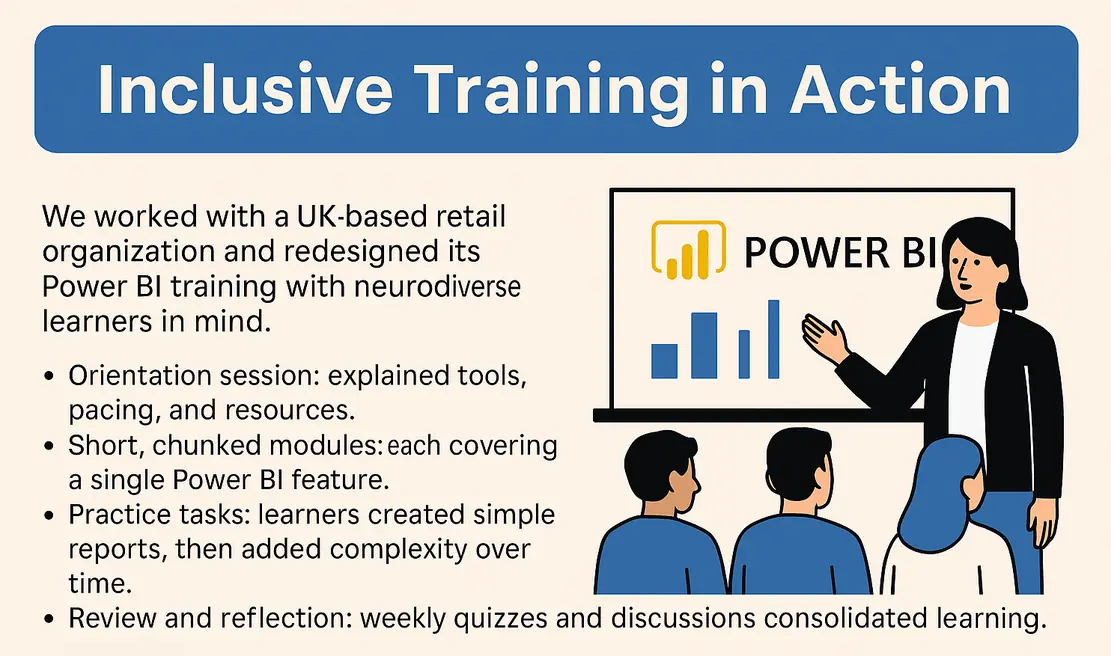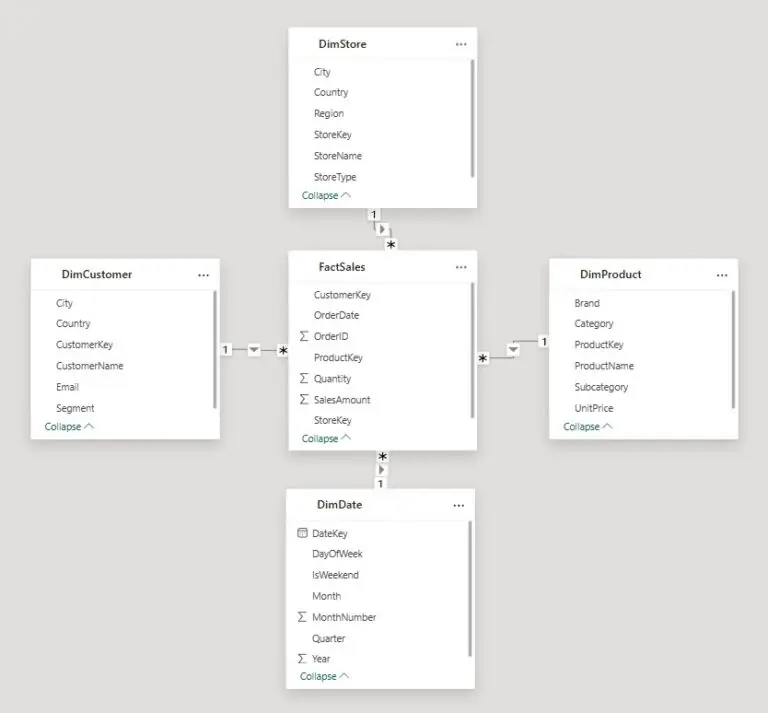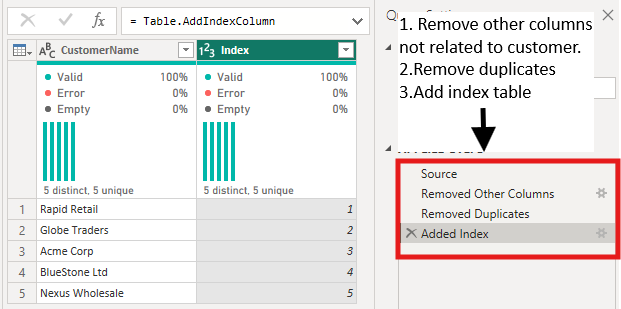
Power BI Training for Neurodiverse Learners: An Inclusive Guide
Contents
Power BI is one of the most powerful tools for turning raw data into clear insights.
But not all learners experience training in the same way.
Around 15–20% of the UK population is neurodivergent, meaning they may have ADHD, autism, dyslexia, or other cognitive differences.
Traditional “one-size-fits-all” training risks overwhelming or excluding these learners.
By designing Power BI training for neurodiverse people, organisations can ensure every learner gains the skills and confidence to analyse data effectively.
This guide explores practical ways to make Power BI training more inclusive, effective, and memorable for neurodiverse learners.
Understanding Neurodiversity in Training
What is Neurodiversity?
Before designing inclusive training, it’s important to understand what neurodiversity means in practice.
It recognises that different brains process information in different ways.
Those differences can bring both strengths and challenges to a learning environment.
Common Learning Traits
-
ADHD: fluctuating attention, benefits from novelty and frequent breaks.
-
Autism: thrives with clarity, predictability, and reduced sensory clutter.
-
Dyslexia: often stronger visual or spatial reasoning, benefits from multimodal formats.
-
Dyspraxia: needs support with organisation, sequencing, and memory aids.
Recognising these traits helps trainers design sessions that cater to diverse learners without singling anyone out.
Principles of Inclusive Power BI Training
To make Power BI courses accessible for neurodiverse learners:
Trainers should draw on proven frameworks for inclusive education and cognitive psychology.
These approaches ensure material is clear, memorable, and flexible enough to meet a variety of needs.
Universal Design for Learning (UDL)
-
Multiple means of representation: combine visuals, text, and spoken explanation.
-
Multiple means of engagement: use discussions, quizzes, and hands-on practice.
-
Multiple means of expression: let learners demonstrate skills in different ways (e.g., building a report, explaining a dashboard).
Accessibility by Default
-
High-contrast slides and interfaces.
-
Avoid relying on colour alone in Power BI visuals.
-
Provide transcripts, captions, and written notes.
Psychological Principles of Retention
-
Spaced repetition: revisit key Power BI concepts over time.
-
Retrieval practice: use questions and exercises to strengthen memory.
-
Dual coding: pair annotated screenshots of dashboards with simple text explanations.
-
Metacognition: ask learners to reflect on how they would apply each feature in their work.
Practical Strategies for Training Delivery
Turning theory into practice means adopting strategies that keep sessions engaging, manageable, and supportive.
The following approaches help reduce overload while boosting participation and retention.
Chunking & Scaffolding
Break down Power BI topics into small, manageable lessons:
-
Importing data
-
Cleaning data in Power Query
-
Creating visuals
-
Adding interactivity
-
Writing first DAX formulas
Each builds on the last, reducing overload.
Encourage Active Learning
Instead of passively watching, learners should:
-
Build dashboards alongside the trainer.
-
Answer quick quizzes (“Which visual best compares sales by region?”).
-
Teach back steps to peers, boosting retention.
Support Different Learning Styles
-
Provide step-by-step written guides for those who like structure.
-
Offer short demo videos for visual learners.
-
Include downloadable practice datasets for hands-on learners.
Feedback Loops
-
Use regular check-ins to gauge understanding.
-
Create safe spaces for questions without judgment.
-
Adjust pacing based on feedback.
In one session we ran for a financial services team, a learner with dyslexia struggled with dense step-by-step slides.
We switched to annotated screenshots paired with short explainer videos, and the difference was immediate.
They were able to follow along in real time, ask more questions, and build their own visuals confidently.
It showed us how small adjustments in format can unlock huge gains in confidence and participation for neurodiverse learners.
Making Power BI Content Neurodiverse-Friendly
The content and materials used in training are just as important as delivery.
By simplifying dashboards, using accessible visuals, and supplying helpful job aids:
Trainers can make sure learners aren’t left behind.
Simplify Dashboards
-
Remove unnecessary clutter.
-
Use consistent colours and fonts.
-
Provide tooltips for extra guidance.
Use Accessible Visuals
-
Add alt text to visuals.
-
Use icons or patterns in addition to colour.
-
Check contrast ratios for readability.
Provide Job Aids
-
One-page cheat sheets on DAX syntax.
-
Flowcharts showing data transformation steps.
-
Templates learners can adapt for their own reports.
Case Example: Inclusive Training in Action
Real-world examples show how these ideas work in practice.
We worked with a UK-based retail organisation and redesigned its Power BI training with neurodiverse learners in mind.
-
Orientation session: explained tools, pacing, and resources.
-
Short, chunked modules: each covering a single Power BI feature.
-
Practice tasks: learners created simple reports, then added complexity over time.
-
Review and reflection: weekly quizzes and discussions consolidated learning.
Result: neurodiverse learners reported higher confidence in using Power BI, and overall knowledge retention improved by 25% compared to the old course format.
Checklist: Designing Inclusive Power BI Training
When building or reviewing a Power BI training programme, the following checklist can help ensure it supports neurodiverse learners:
☐ Provide multiple content formats (slides, transcripts, practice files).
☐ Chunk lessons into 10–15 minute sections.
☐ Use retrieval practice (short quizzes, exercises).
☐ Revisit key concepts (spaced repetition).
☐ Ensure dashboards and slides meet accessibility standards.
☐ Supply cheat sheets and templates for later use.
☐ Create feedback channels for learner input.
FAQs
Common questions often arise when planning inclusive training.
Here are a few quick answers to the most frequent ones.
Q1. How can ADHD learners succeed in Power BI training?
Use shorter modules, allow frequent breaks, and provide recordings for review.
Q2. What helps autistic learners most?
Consistency, predictable structure, and uncluttered visuals reduce overload.
Q3. How do dyslexic learners benefit?
Dual coding (combining annotated visuals with text) helps reinforce understanding.
Q4. What’s the single most important factor in retention?
Retrieval practice: asking learners to recall and apply concepts, not just re-read them.
Conclusion
Designing Power BI training for neurodiverse learners isn’t about creating a separate course for a small group.
It’s about embedding accessibility and flexibility into every session, so all learners can succeed.
By combining good teaching practices with principles from psychology and inclusive design, organisations can ensure every learner not only understands Power BI but remembers and applies it with confidence.
At Acuity Training, we build accessibility and learner psychology into every Power BI course.
Our approach focuses on small group sizes, practical hands-on exercises, and resources that support learning long after the session ends.
If your team would benefit from a Power BI training plan designed with inclusion at its core, we’d love to help.
- Facebook: https://www.facebook.com/profile.php?id=100066814899655
- X (Twitter): https://twitter.com/AcuityTraining
- LinkedIn: https://www.linkedin.com/company/acuity-training/





